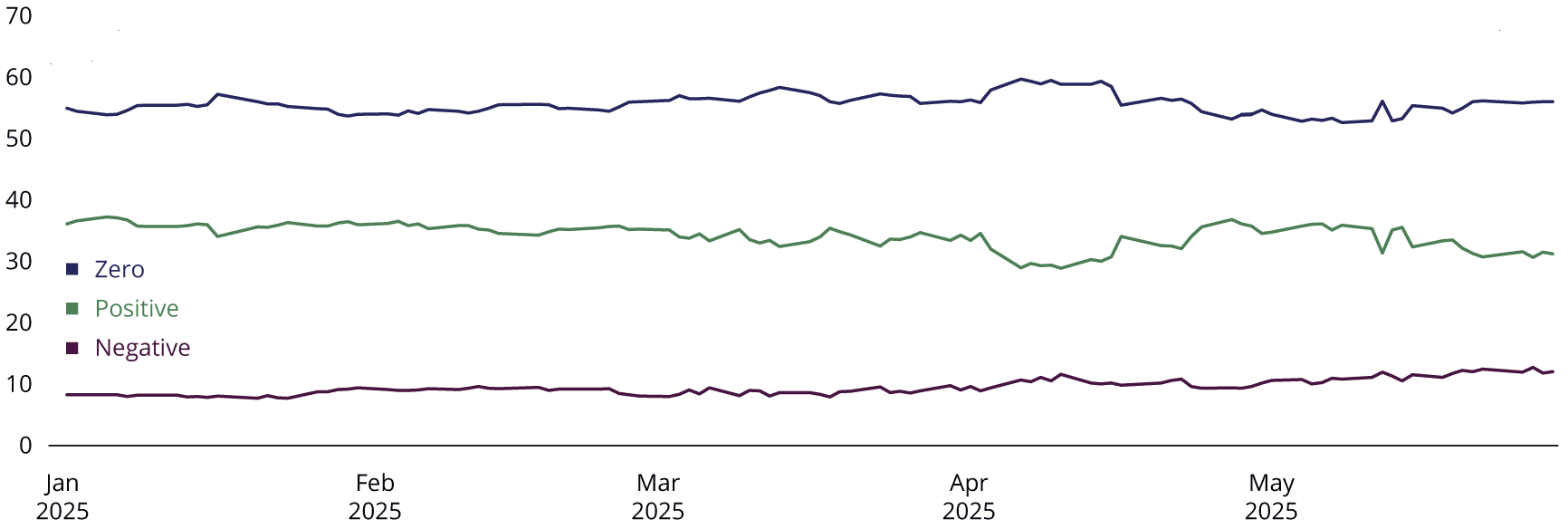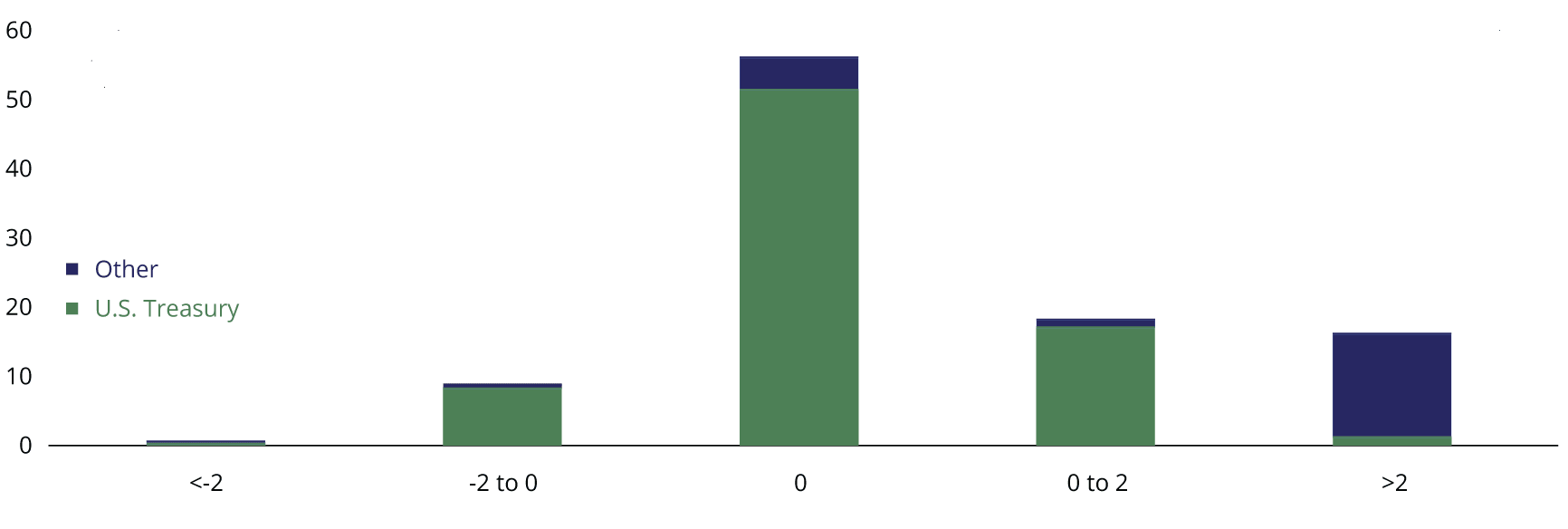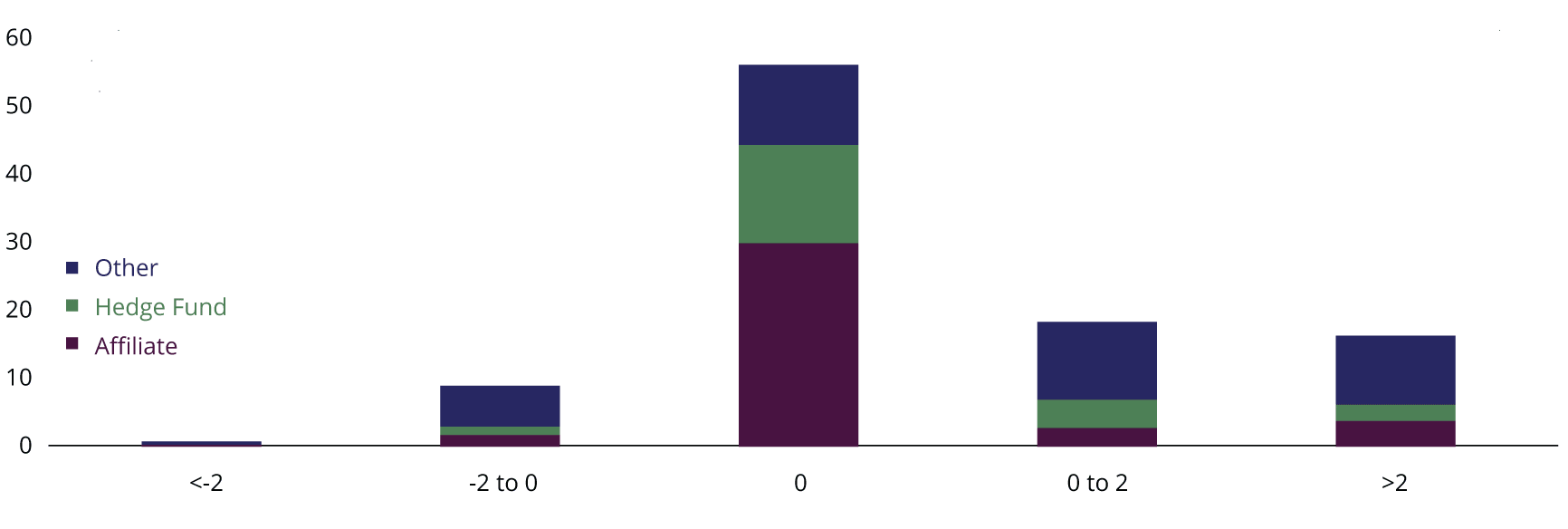Are Zero-Haircut Repos as Common as Advertised?
Published: August 12, 2025
Views expressed are those of the authors and do not necessarily represent official positions or policy of the Office of Financial Research or the U.S. Department of the Treasury.
Lenders reduce risk in the repurchase agreement (repo) market by requiring collateral from a borrower. The collateral provides the cash lender with an asset that can be sold if the cash borrower does not meet its obligation while motivating the borrower to honor the agreement.
Along with asking for collateral, cash lenders may request a “haircut” on the collateral. The haircut is the amount of collateral provided in excess of the amount of cash lent and is often expressed as a percentage of the collateral value. A haircut protects the cash lender from the risk that the collateral might lose value if the counterparty defaults. A haircut that is too high may inhibit trading activity and lead to decreased market liquidity, while a haircut that is too low can leave market participants without sufficient protection against the risk of counterparty default.
In 2022, the OFR conducted a pilot study of the non-centrally cleared bilateral repo (NCCBR) market segment to address data gaps. One of the main findings from this study was that 70% of all repo outstanding had a zero haircut, meaning that no excess collateral was required. At first glance, a zero haircut seems risky because any reduction in the collateral value would leave the cash lender without sufficient collateral to recover the amount of cash lent out in the case of a counterparty default. It also implies that borrowers, such as hedge funds, could theoretically take on unlimited leverage. However, zero haircuts do not necessarily mean no limits. Repo counterparties might be using other financial tools to balance risk, such as holding offsetting positions that reduce their net exposure, among other things (see OFR Brief 23-01).1
In May 2024, the OFR published a rule establishing a daily data collection for the NCCBR market segment. The first reporting of repo transactions began in December 2024, which provided a more accurate picture of haircut activity and the first opportunity to validate the pilot’s widely cited zero-haircut statistic.
Figure 1. Share of Outstanding Repo by Haircut Type (percent)

Note: Data are from January 2, 2025, through May 30, 2025. Each line represents the daily share of outstanding repo.
Sources: OFR Non-Centrally Cleared Repo Collection, Authors’ analysis.
During the first five months of 2025, 56% of outstanding repo had zero haircuts while 34% and 10% had positive and negative haircuts, respectively (see Figure 1). The percentage of zero-haircut repos is lower than in the pilot study. Haircut distributions stayed steady over this time period, including around the end of the first quarter of 2025 and during April’s market volatility.
Figure 2. Haircut Distribution by Collateral Type (percent share)

Note: Data are from January 2, 2025, through May 30, 2025. Each bar represents the average daily share of outstanding repo associated with the haircut bin given on the x-axis. Haircuts are expressed in percent collateral posted in excess of cash lent.
Sources: OFR Non-Centrally Cleared Repo Collection, Authors’ analysis.
Figure 2 shows the distribution of NCCBR haircuts by collateral type. Over 60% of Treasury repo outstanding has a zero haircut. Of the zero-haircut repo, 92% are backed by Treasuries. For non-Treasury repo, just over 20% have a zero haircut while 69% have haircuts above 2%.
Figure 3. Haircut Distribution by Counterparty Type (percent share)

Note: Data are from January 2, 2025, through May 30, 2025. Each bar represents the average daily share of outstanding repo associated with the haircut bin given on the x-axis. Haircuts are expressed in percent collateral posted in excess of cash lent. Counterparty type is defined relative to the covered reporter that submitted the data, which is always a broker-dealer in this sample.
Sources: OFR Non-Centrally Cleared Repo Collection, Authors’ analysis.
We find that approximately half of all zero-haircut repo transactions are between affiliated entities, a feature that could not be fully accounted for in the 2022 pilot study (see Figure 3). Discounting this activity reduces the percentage of zero-haircut repo outstanding to 42%. This new result suggests that, in aggregate, zero-haircut repo is less prevalent than previously thought.
Among the non-affiliate zero-haircut repo transactions, roughly half involve hedge funds. Notably, the proportion of hedge fund repo with zero haircuts remains high at 65%, indicating that this is a predominant feature among leveraged firms utilizing repo.
Overall, the amount of zero-haircut repo is lower than the 2022 OFR pilot study, but still significant. Higher-quality data show that many zero-haircut repo transactions are between affiliated counterparties and that the proportion of zero-haircut repo is stable over different types of market regimes, such as quarter-ends. This complements previous findings by better explaining zero haircuts as a market practice. More research is needed to determine the proportion of repo arranged without risk mitigants.
-
Samuel J. Hempel et al., “Why Is So Much Repo Not Centrally Cleared?” Brief No. 23-01 (Office of Financial Research, May 12, 2023), https://www.financialresearch.gov/briefs/2023/05/12/why-is-so-much-repo-not-centrally-cleared/ ↩